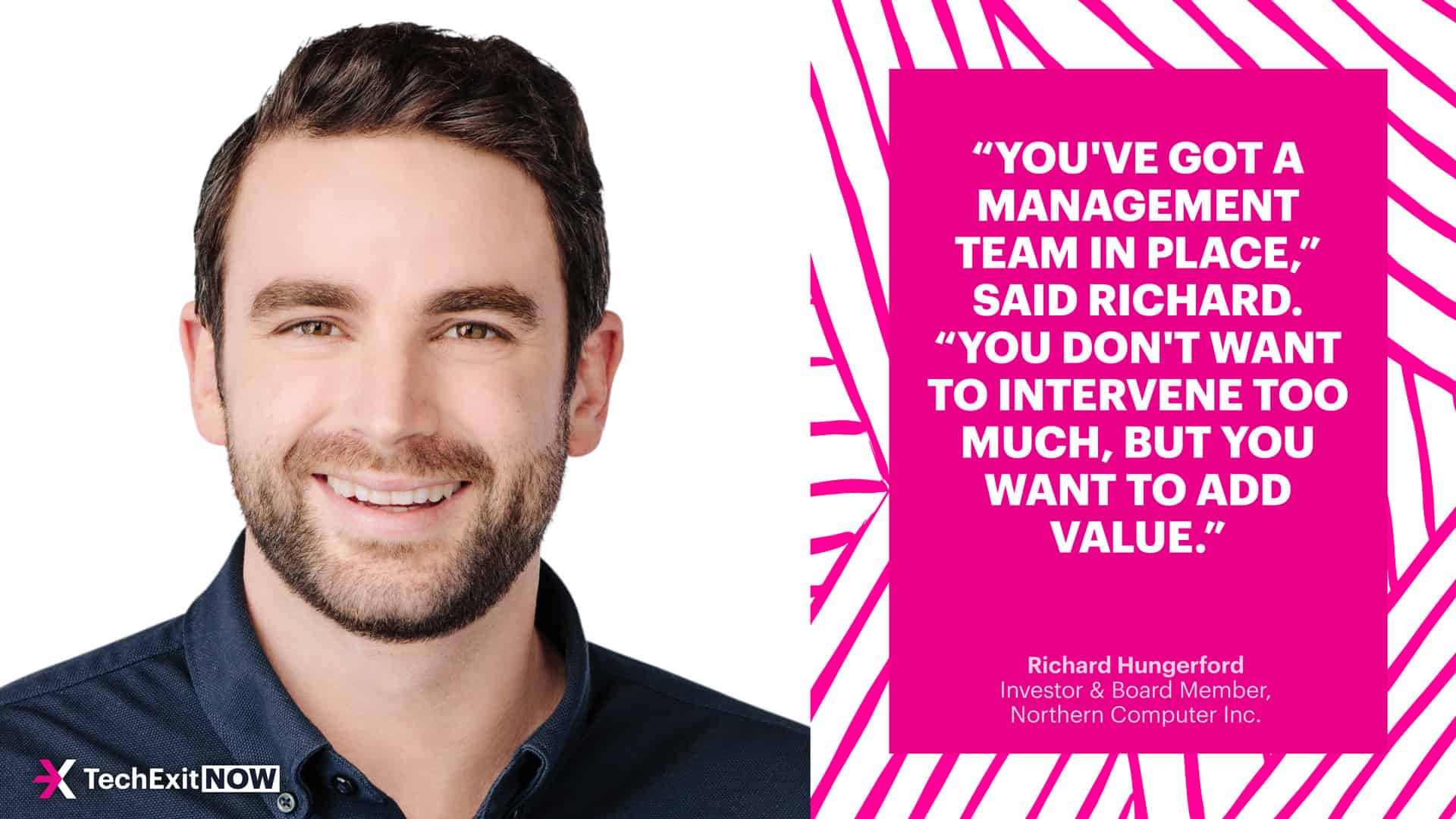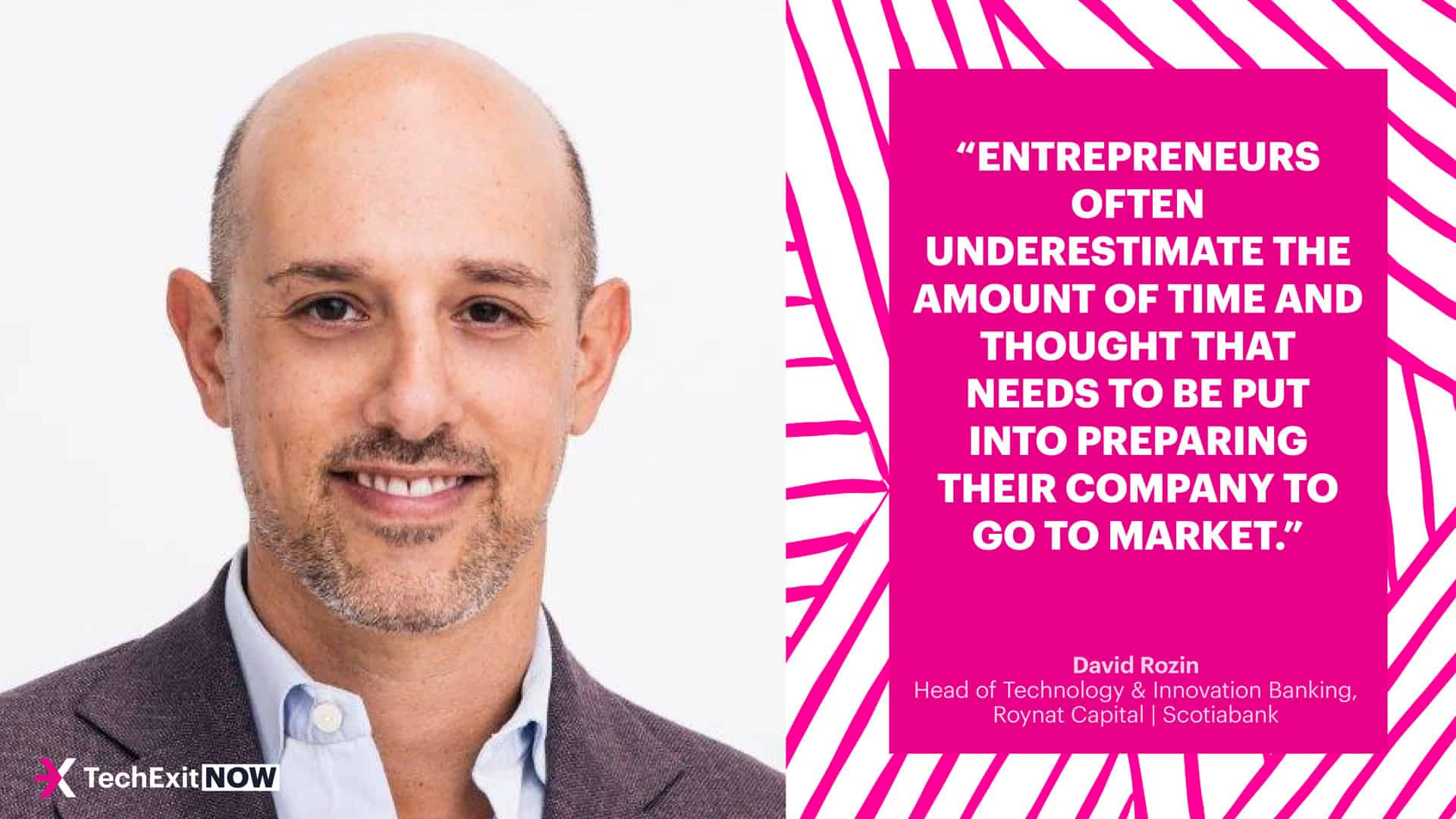4 Ways Board Members Can Accelerate Acquisition-Led Growth (Without Taking Over)
Stefan Palios

M&A looks different depending on if you’re the person selling, acquiring, or advising on the transaction. Richard Hungerford has been all three—first by selling his startup to Hootsuite, second by leading Hootsuite’s corporate development team, and now as a board member and investor. Speaking with TechExit.io for the second time, Richard shared how his approach to M&A changed as his position evolved.
Key takeaways:
- Board members cannot meddle too much in the day-to-day of M&A transactions; they act almost like outsourced team members.
- Richard advises board members to lean on their strengths to fill in any skill gaps that might exist on the management team.
- Don’t discount the value of context; while you may have experience in other businesses, lean on the management team for industry and in-business perspectives.
First, he built and sold a startup. Then, Richard Hungerford led Hootsuite’s corporate development team, among other roles, for nine years. Now, he’s on his third act: as an investor and board member. Currently on the board of Northern Computer, a 30+ year old IT services firm, Richard is helping the company grow through M&A, including 2023’s acquisitions of Syncsys and Compufix.
A Steering Committee member of TechExit.io, Richard shared how his approach to M&A changed as he transitioned from operator to board member.
Tip 1: Know your place
The biggest challenge, particularly for people like Richard who come from an operator background, is how your role evolves.
As a founder or operator, you own everything, including whether or not the deal works. As a board member, you are not involved in day to day operations, nor do you have any ownership or accountability over business outcomes.
“In a way we're like the outsourced M&A team,” said Richard.
This is a blessing and a curse: a blessing because you can give advice freely and help wherever you can, but a curse because you cannot control everything and, ultimately, management needs to lead the charge.
Tip 2: Become a sponge
Richard’s advice for all board members, but particularly if you’re going to help with M&A deals for the company, is to become a sponge.
Even if you have experience in the industry, you need to absorb the inner workings of your specific business: the product offering, sales style, culture, and operational cadence. Richard was clear that these things differ from company to company, so experience in one business does not mean knowledge automatically translates.
“The deeper knowledge that you have of an industry, the more successful you're going to be [in M&A transactions],” said Richard.
To accomplish this, Richard said to lean on existing management, watching them work and asking them as much as you can (within reason) about institutional memory.
“You really need to lean on management because they are living, breathing, and sleeping that business,” said Richard.
Tip 3: Play to your strengths
When Richard first joined the Northern Computer board, he wanted to add value to the M&A side of the business, particularly because the company did not have a dedicated team for acquisitions.
As someone who has seen acquisitions from multiple angles, Richard was capable of taking on almost any step in the process. As a board member, this broad-ranging skill set is a strength because it offers flexibility; Richard is able to fill holes and bridge gaps, supporting the management team as needed.
It’s also his advice to other board members: leverage your strengths to support the team however it might be needed. Just don’t take over.
“I want to fill in the gaps where I can fill in the gaps,” said Richard. “... I'm happy to go from high-level, strategically thinking to getting in the weeds so that you can get a deal done.”
Tip 4: Lean on team members, but don’t crush them
The transition from operator to board member is delicate because you have a lot to balance. Some days you might feel like you’re getting back in the weeds, but you have to stay above day-to-day operations.
For Richard, the key to success is leaning heavily on the management team of your company. This means spending as much time as you can with them on details where you can add value. At the same time, it also means self-regulating and not putting so much onto the team that it inhibits their ability to run the business.
Even if your company has a dedicated M&A team or in-house lawyers and accountants to assist with deals, you have to be cautious about pushing the agenda too much as a board member.
“You've got a management team in place,” said Richard. “You don't want to intervene too much, but you want to add value.”
Build to succeed first
Acquisition-led growth is a powerful tool in any company’s arsenal. But Richard cautioned all founders, leaders, and board members to see it as a strategy rather than a sole outcome. This echoes advice given by other entrepreneurs: if you’re looking to sell one day, focus on building a great business first. And if you think you might want to become the acquirer, see how acquisitions fit into growth plans before buying anything.
If you’re a Canadian company thinking of exiting, though, Richard might be able to help you.
Now that he’s got his first couple of investments complete, he’s looking to acquire more companies for his portfolio: ideally Canadian-based, $1-$5 million in EBIDTA, profitable, and leveraging a recurring revenue model (e.g. SaaS, retainer services, etc.).
“We want to invest in a business where we could have an impact and help it grow,” said Richard. “And in a space where you tend to grow inorganically through acquisitions.”
BACK









